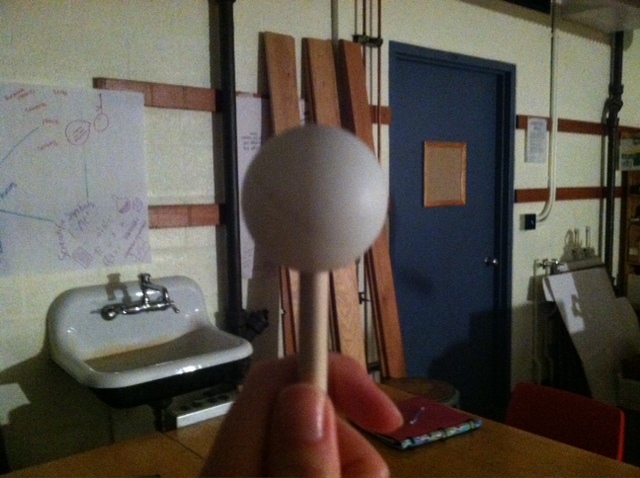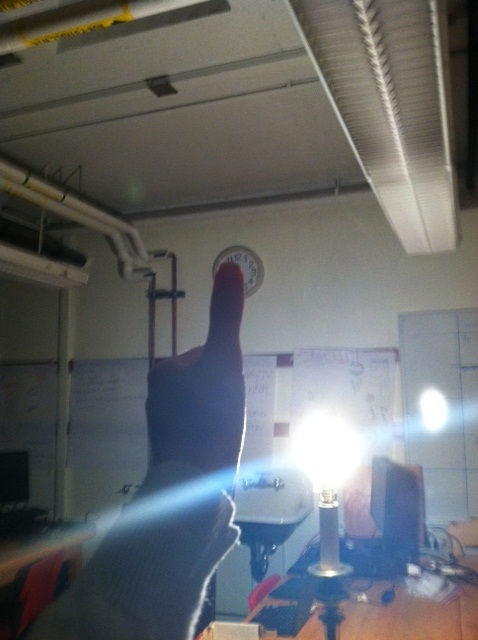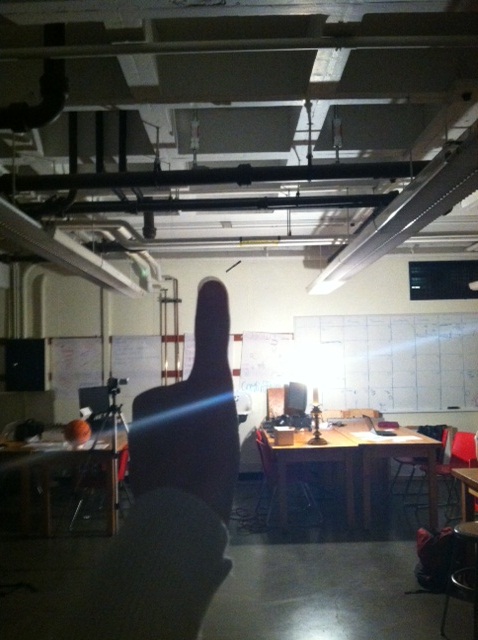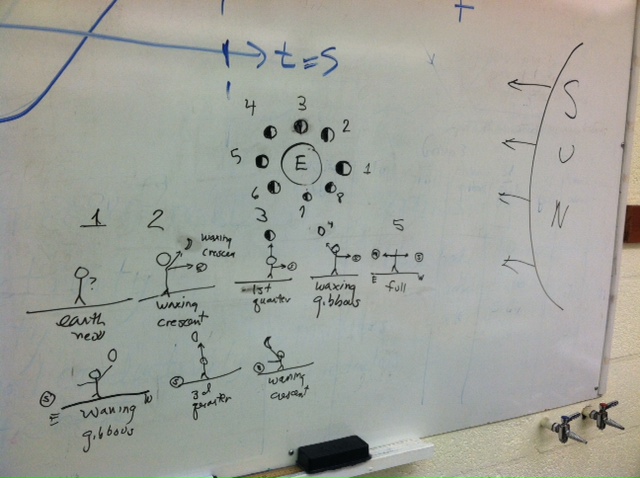You are here: start » days » spring2012daybyday » spring2012day17 » inferring_the_arrangement_of_the_sun_moon_earth_system
Inferring the Arrangement of the Sun/Moon/Earth System
First, Emily asked the students to stand with a ball in such a way that the ball models the shape of the moon that they saw this weekend. The students stood in such a way that the ball created a 90 degree angle with the lamp.

To model the distance of the sun from the moon from the earth: Stand next to the lamp and hold arms out in a 90 degree angle (one pointed towards the lamp, with the other holding onto the ball). The ball is not half-lit when it's very close to the lamp. In order to see a half-lit ball with a 90 degree angle to the lamp, one must move away from the lamp.
Next, everyone moved close the the clock and held their thumb up towards it. They were not able to cover the clock completely with their thumb. As they moved further away from the clock, their thumb appeared to become more and more large in comparison to the clock, and eventually they were able to cover the clock with their thumb. Because the sun and moon appear to be the same size in the sky, we can infer that the moon is close to the earth, and the moon and the earth are far from the sun.


Where we are, and where the moon is, determines what shape we see on Earth.
Waxing phases: moon appears to be following the sun across the sky.
Waning phases: sun appears to be following the moon across the sky.
Emily drew a model of the sun/moon/earth system on the board to give the students a better visual representation of the moon's phases. The moon is always half lit, but the lit portion of the moon that we are able to see from Earth changes throughout the month.
